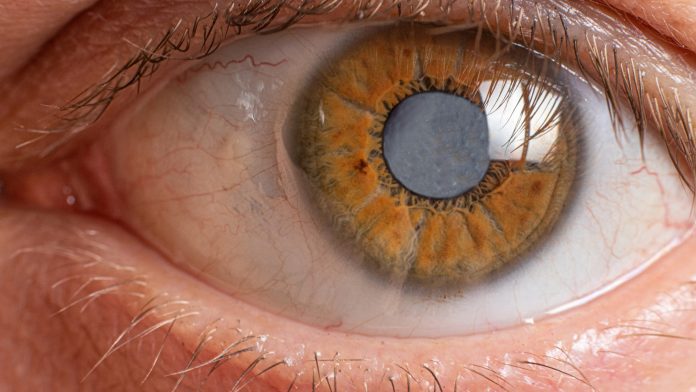
The first ever drug treatment for cataracts could be on the market imminently, with a team of international scientists at Anglia Ruskin University (ARU) proving the new drug’s effectiveness in laboratory tests.
Currently, cataracts can only be cured through surgery, which can be stressful for the patient, expensive, and potentially result in an array of complications, such as glaucoma, retinal detachment, infection, and loss of vision. The development of drug treatment for cataracts could transform care for the condition, offering patients a non-invasive strategy for optimising their eye health.
The research results are published in Investigative Ophthalmology and Visual Science.
What are cataracts?
Cataracts occur when the eye lens becomes clouded over time, which impacts vision quality. The condition is caused by the disorganisation of proteins in the lens that results in clumps of protein forming that scatter light and significantly reduce transmission to the retina.
Research from the World Health Organization (WHO) suggests that cataracts cause a third of worldwide blindness, affecting 65.2 million people and causing moderate to severe vision loss in more than 80% of cases. Studies suggest that the risk of developing cataracts increases with each decade of life, starting at around age 40, meaning that the condition could become more prevalent in the future due to an ageing population.
The first drug treatment for cataracts
For their research, the team, led by Professor Barbara Pierscionek, the Deputy Dean in the Faculty of Health, Education, Medicine and Social Care at ARU, performed advanced optical tests on an oxysterol compound that showed promise as an anti-cataract drug.
In laboratory tests, the treatment for cataracts, which is comprised of the oxysterol compound VP1-001, enhanced refractive index profiles in 61% of lenses. Refractive index profiles are an essential optical parameter needed to maintain high focusing capacity. The treatment restored the protein organisation of the lens, allowing the lens to focus better, which was supported by a reduction in lens opacity in 46% of cases.
Professor Pierscionek, a member of the Medical Technology Research Centre at Anglia Ruskin University, concluded: “This study has shown the positive effects of a compound that had been proposed as an anti-cataract drug but never before tested on the optics of the lens. It is the first research of this kind in the world.
“It has shown that there is a remarkable difference and improvement in optics between eyes with the same type of cataract that was treated with the compound compared to those that were not.
“Improvements occurred in some types of cataracts but not in all, indicating that this may be a treatment for specific cataracts. This suggests distinctions may need to be made between cataract types when developing anti-cataract medications. It is a significant step forward towards treating this extremely common condition with drugs rather than surgery.”

























